|
Rhododendron macrophyllum (Pacific Rhododendron)
|
Kingdom
|
: |
Plantae
– Plants
|
|
Subkingdom
|
: |
Tracheobionta – Vascular plants
|
|
Superdivision
|
: |
Spermatophyta – Seed plants
|
|
Division
|
: |
Magnoliophyta – Flowering plants
|
|
Class
|
: |
Magnoliopsida – Dicotyledons
|
|
Subclass
|
: |
Dilleniidae
|
|
Order
|
: |
Ericales
|
|
Family
|
: |
Ericaceae – Heath family
|
|
Genus
|
: |
Rhododendron L. – rhododendron
|
|
Species
|
: |
Rhododendron macrophyllum D. Don ex G. Don – Pacific rhododendron
|
|
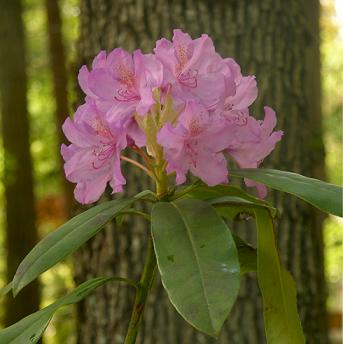 |
|
Note: Throughout the years
I've written short articles for our website's home pages (home pages are the
front page of a website) about these plants. They are now included at the bottom
of this page, and are illustrated by botanical drawings and paintings, some of
which are from books published from 1500 - 1900. |
|
A large, evergreen shrub with thick, oblong leaves and a
rounded top. They grow compact and dense in the
open, and incredibly tall and leggy in the shade during their very long lives;
expect heights of 7-8.' Their shape makes them
amenable to underplanting with ferns or smaller flowering plants.
In early spring or summer they erupt in flamboyant clusters of large,
rose-purple/white flowers- every bit as spectacular as the cultivated varieties.
They need an acidic soil, so add elemental sulfur and peat moss to the planting
hole and/or mulch with shredded oak leaves or pine needles.
They add a welcome splash of colour under conifers. Native from southern BC to
California (USDA zones 6-9), they are the Washington State flower. |
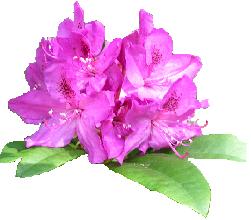
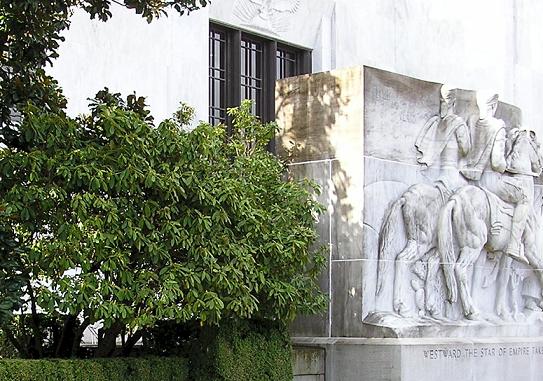
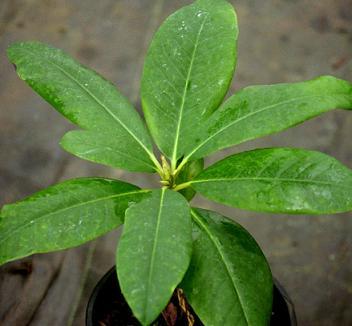 |
|
Photo above, center: Pacific
Rhodies in front of Oregon State Capitol |
 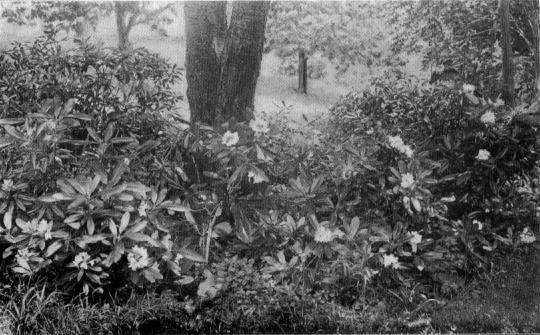 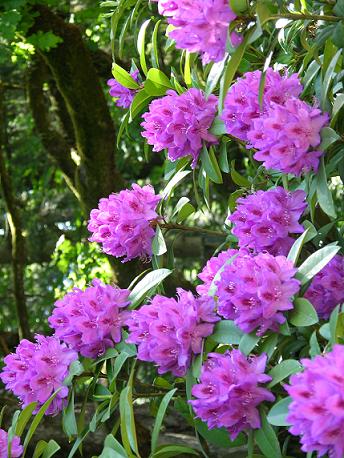 |
|
Photo
from Chantal's blog, Rebound Road: Large, mature Rhododendron branches rooted on
the hillside arch over trail below.
http://reboundroad.blogspot.com/2010_05_01_archive.html
|
|
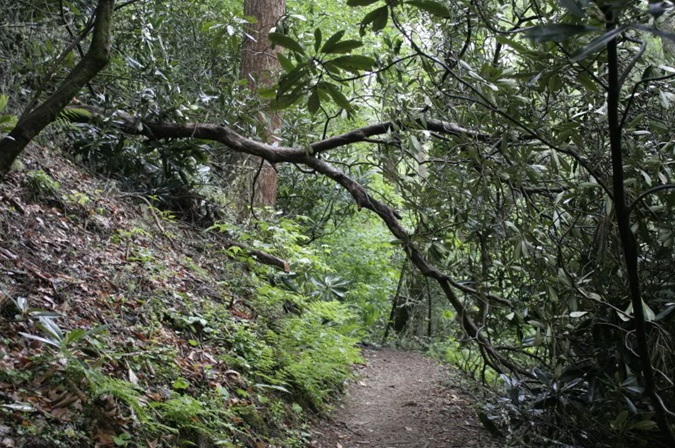
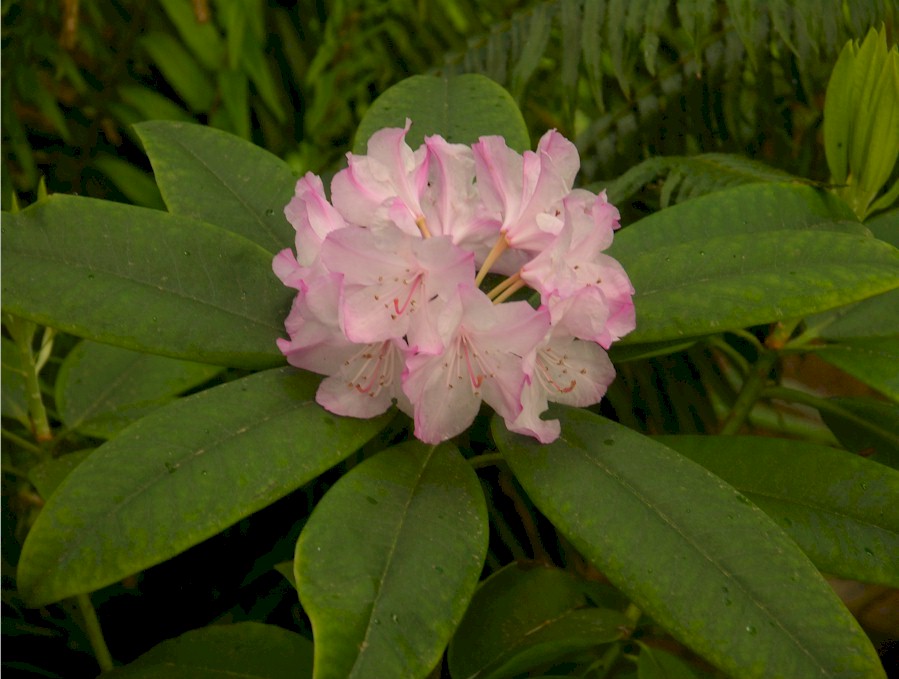 |

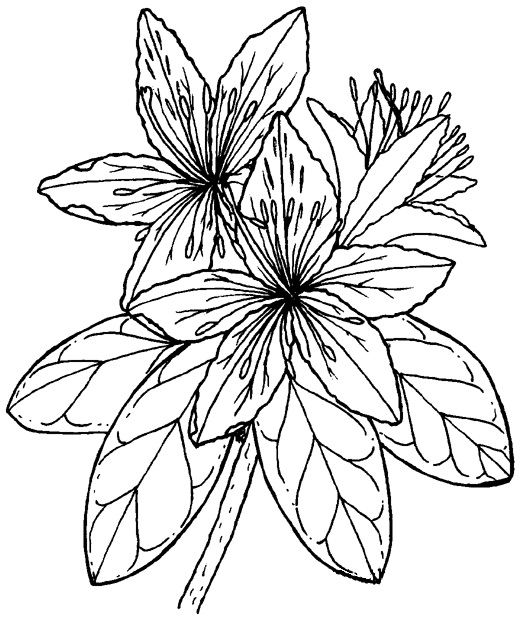 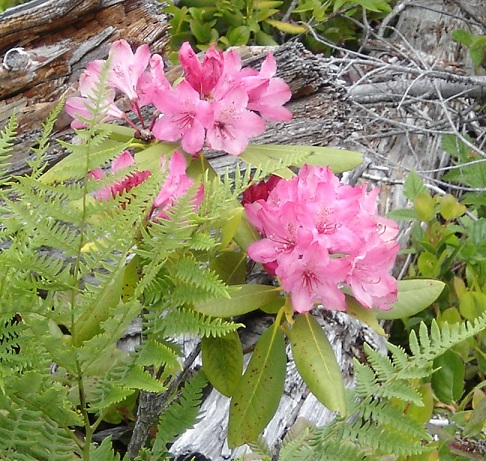
Photo above, right, by Robert Dunning. |
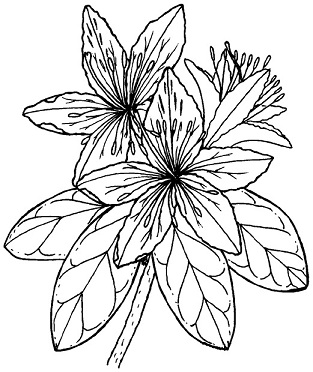 |
From Homepage May 3, 2002
Undoubtedly the most commonly used northwest native shrub in the
landscape is the Pacific Rhododendron (Rhododendron
macrophyllum).
The Oregon State Capitol building is surrounded by them, homes around
the world have them in their yards, there are parks and conservatories
devoted to showcasing their beauty. Why? Let me count the ways:
-The elegant foliage sets off their large clusters of
orchid-like blooms.
-They can be left alone to grow more than 10 feet tall
or trimmed in almost any shape desired.
-They are easy to grow, need minimal care and will even
grow under conifers.
-They are outstandingly beautiful both cultured or
"wild."
|
|
From Homepage May 6,
2005
Our
Pacific Rhododendron is without doubt the queen of the woods (and
the Willamette Valley) right now. One can see them blooming with abandon
in yards and gardens, all around the Oregon state capitol building and
creating a riotous display growing wild.
This is a northwest native shrub no landscape should be without. Even during a
spring rain, the vibrance of this flowering shrub is unstoppable!
It's no wonder beloved poet Ralph Waldo Emerson honored this glorious
northwest
native beauty in 1839 with this poem.
|
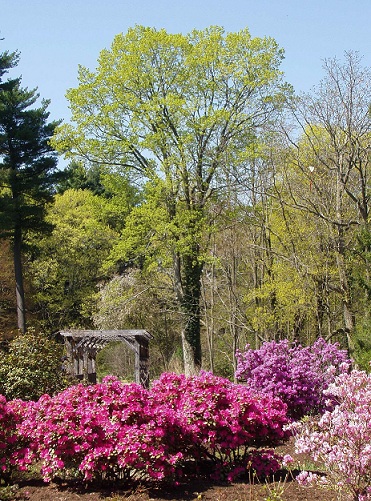
This photo is from Daderot Bank Wellesley MA Rhododendron Garden |
The Rhodora
On being asked, Whence is the flower?
In May, when sea-winds pierced our solitudes,
I found the fresh Rhodora in the woods,
Spreading its leafless blooms in a damp nook,
To please the desert and the sluggish brook.
The purple petals, fallen in the pool,
Made the black water with their beauty gay;
Here might the red-bird come his plumes to cool,
And court the flower that cheapens his array.
Rhodora! if the sages ask thee why
This charm is wasted on the earth and sky,
Tell them, dear, that if eyes were made for seeing,
Then Beauty is its own excuse for being:
Why thou wert there, O rival of the rose!
I never thought to ask, I never knew:
But, in my simple ignorance, suppose
The self-same Power that brought me there brought you.
|
|
|
|









